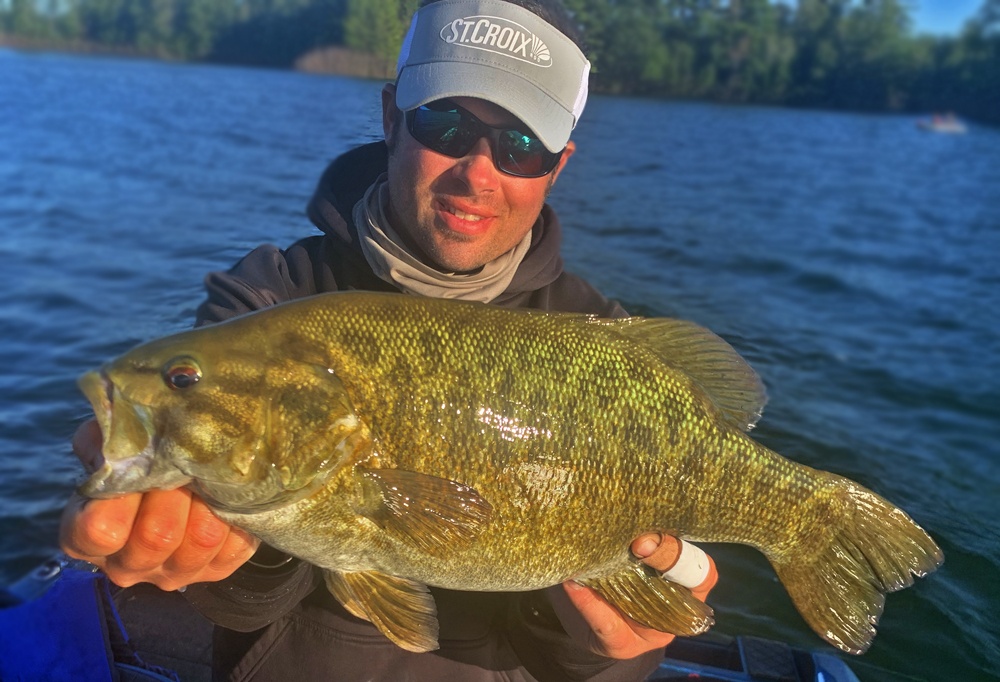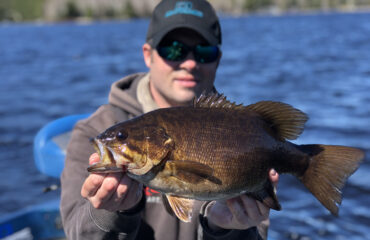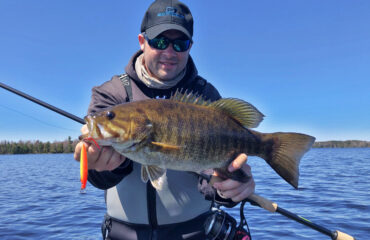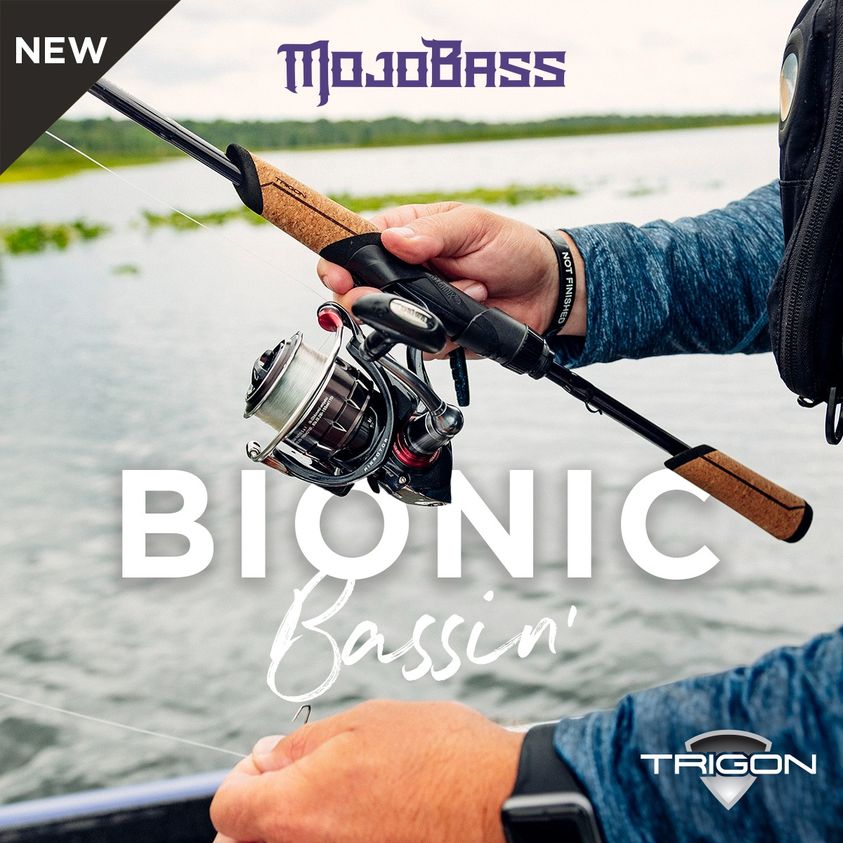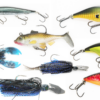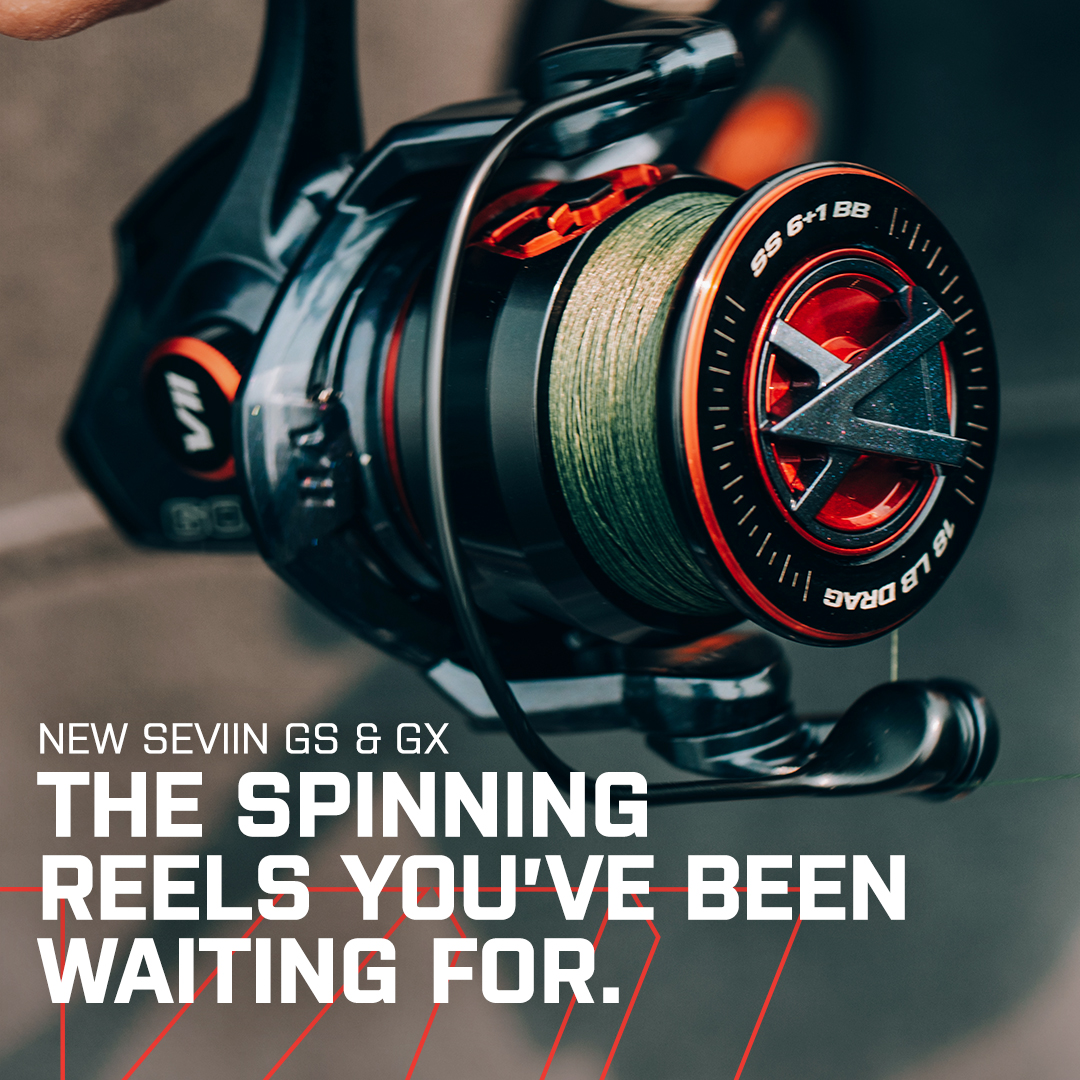Five More Bass Philosophies
By Andrew Ragas
Over 3 seasons ago, I introduced readers and fellow bass anglers to a few of my philosophic viewpoints for targeting trophy bass. Since then, additional theories and observations have translated into further productivity and success on the water as it relates to catching more and bigger fish.
In that original piece, my first 5 philosophies introduced to readers covered the following topics: Camping out for bites; Don’t leaving fish to find fish; Establishing patterns and through the process of elimination; Running and gunning is overrated; Don’t be a bank beater.
Since then, my boat has accumulated five more.
For my success in bass fishing, I have identified and applied a set of important values that I operate by on the water that have evolved me into the calculated decision-maker and angler I have become.
#6 – Fish an Attention Seeker
Smallmouth bass are curious creatures. They easily engage and entertain anglers for their abundance, catchability, and battleship. The largest specimens available in every fishery have been around the block before, having been caught several times during their life span. These specimens of 20 years and older are wise creatures of habit. Rather than exert energy several times per day to feed on smaller pedestrian prey, most big fish actually favor minimizing their meals, conserving themselves to the largest meal choices they can handle. They’ll avoid happy meals, favoring super size meals instead. For the monster fish potential, fish a large attention seeker.
When speaking of attention seeking baits, a few of my top big fish tools and lure selections come to mind. Consider large and loud topwaters that push water, creating a loud wild ruckus atop the surface, such as a Rapala X-Rap pop, and a 6” Rapala Skitter-V. Prop style musky baits work excellently too, such as a Bucher TopRaider, Series 130 Whopper Plopper, and Lake-X Lilbasstard. Work each with power to create attention atop structures. If big fish are close by, they’ll get angry and potentially strike.
Another top choice is a large 6 to 8 inch swimbait. The MegaBass Mag Draft replicates a variety of northern pelagic fish species, swimming seductively and freely with its power paddling tail. I exclusively work this swimmer with power rods on big fish waters where 6 pounders are the day’s objective. Smallmouth are expert visual feeders that’ll charge in from significant distances for the kill. They’ll slam these swimbaits with murderous force.
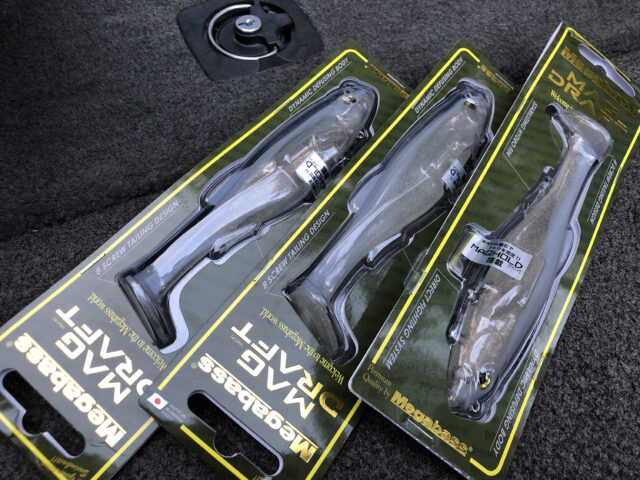
Last, how about some bling to attract the big girls? Ladies love jewelry. Consider an Alabama rig to work on your clear water, pelagic-based fisheries.
Big and gaudy is the name of the attention seeking game. Obnoxious and outside of the box isn’t a necessity like some practicality and feeding efficiency is.
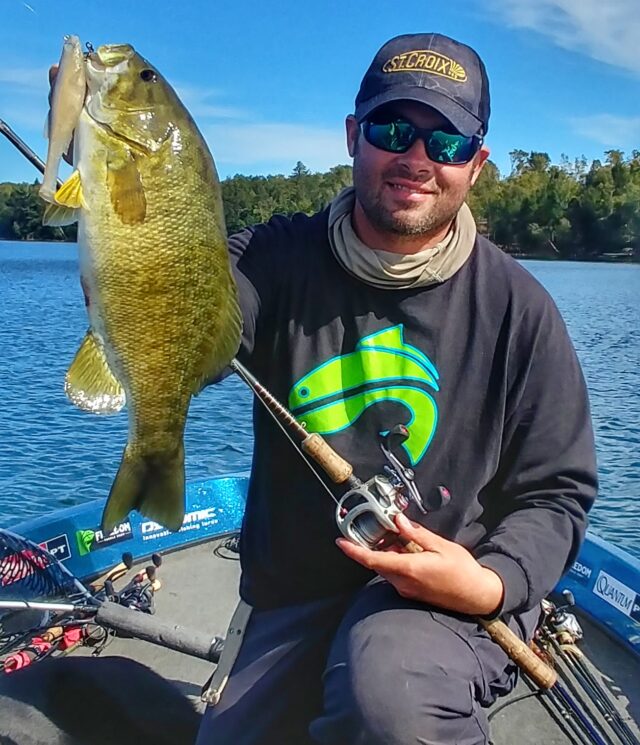
#7 – Escape Your Comfort Zone
When consulting with guide customers and introducing folks to my boat’s tackle selection, I often preach to not live and die by certain tactics and strategies. One-dimensional angling will stunt your growth, intellect, and evolution.
We all know that one guy who’s a bank beater and loves shoreline fishing. We could also be friends with drop shot specialists who do nothing but the aforementioned. I’ve met and hosted a few of these folks, and they left my boat inspired and newly invented anglers.
I pride on being a diverse, inventive, adventurous angler. At the back end of my boat on every guide trip, I tinker and experiment with everything I can think of to quickly help the boat establish new patterns and stay abreast of changing bites.
On a hot bite, you may be handsomely rewarded if your fishing strengths align with the conditions and behavior of bass. However on a slow adverse fishing day, you’ll have no answers because you’ve failed to diversify your approach, and work on aspects of your bass fishing game that have been lacking.
Beyond strategy, this same neglect will also negatively impact your lake selection and motivation to travel.
I have lots of friends who fish the same 5 lakes an entire calendar year, and don’t venture off to anywhere else. Never camp and fish the same 5 lakes for a full season. Many anglers settle for the same water bodies every year. I am sometimes guilty of this myself, prioritizing the convenience and short travel distance of fishing my home waters in nearby Minocqua, WI on most trip days versus taking the extra 40 minutes to an hour to drive further to potentially higher-quality, lesser exploited fisheries.
While limiting the lake selection, you might be able to best intimately pattern them and their fish movements over the course of a full season. However, your fishing season will stale rapidly.
Explore, seek adventure, and travel to new fishing destinations even if they’re the unknown. The pandemic lifestyle of 2020 forced many of us to explore new fisheries and locations due to banned Canadian and international fishing travel. During my free time, I often found myself exploring new fisheries located up to 100 miles from home. I also expanded my reach into the wilderness of northern Michigan, fishing some of its waters on my days off. Perhaps this year you’ll check out that one inviting pond in the next subdivision over, float a new pool of your favorite river, or lake hop your way into a new county or neighboring state like I’ve undertaken from Wisconsin’s north woods.
To conquer the fishery, expand your repertoire and fish adventurously. Pursue the thrill of new-to-you discovery!

Strive to fish and explore new waters each year. On this first time visit to a lake in the next county over, I was rewarded with this 22 inch smallmouth, my largest from 2020.
#8 – Lakes that were bad 20 seasons ago could now be good
Remember that one lake you used to fish but then gave up on, because its big fish either got harvested or its fishing started to suffer? The good news is time heals fisheries too.
Looking back on my fishing career, I recall going on family fishing trips several years ago to lakes and destinations that, at the time, were unproductive and poor in fishing. Now 20 seasons later, I’m rediscovering them, with findings that some of these former poor fisheries are nowadays excellent walleye and bass fisheries.
Lakes and their fish populations are cyclical. Populations of fish species always peak and crash from a multitude of natural or human-influenced reactions. These influencers commonly consist of overpopulation or stunting of certain species that’ll create an imbalanced fishery, overharvest and lack of fisheries management, pollution or run-off from lawn fertilizers that’ll create algae blooms, and a host of natural causes such as plant-life or other organic explosions.
Winterkill is one lake changer that drives me crazy, common on our shallow heavily vegetated and nutrient-rich eutrophic lakes that can become largemouth and northern pike honey holes. Winter kill suffocates and wrecks an entire lake to the point of seldom future recovery. It’ll occur during winters with deep, heavy snow cover atop the ice, restricting sunlight penetration to help maintain underwater plant life. As a result, plant life decay and carbon dioxide output suffocates most lake life. I recall the winters of 1996, 1997, 2015, and 2018 producing horrific winter kills on a handful of my favorite northern Wisconsin lakes. Some of my favorite largemouth bass and pike fisheries were partially killed, but left with a painfully slow ability to recover. Others meanwhile completely decimated, without any stocking afterwards to help restore them. Such a shame!
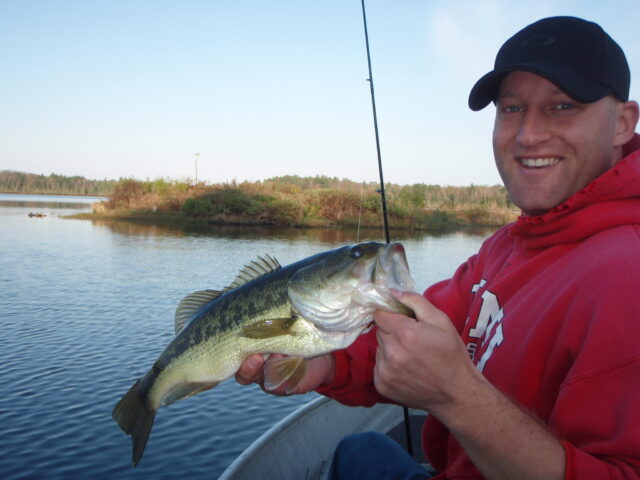
This specific lake and its largemouth bass was destroyed by the 2015 winterkill. We’ve visited a few times since to see what remains and there’s been no signs of largemouth bass that once were abundant.
I fish several lakes that were once good or better 20 years ago, but are now peaking again within certain aspects of the fisheries. I fish lakes that are good now that were known to be bad 20 years ago, while lakes that were bad 20 years ago are fishing great once again.
Remember, a 20 inch smallmouth bass in my region is a 20 year old fish. Many of these bass fisheries I introduce customers to were only created and established in the mid 1990’s, peaking in the 2010’s. Maintaining them and protecting the fish are keeping these waters going. Now into this new decade, new fisheries that weren’t yet established or on the map 10 to 15 years ago are now being sought after and found.
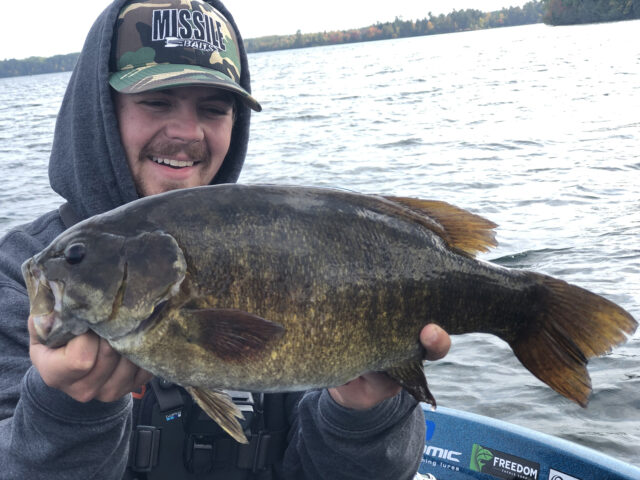
20 years ago many lakes didn’t have a smallmouth fishery. Since their introductions to eradicate rusty crayfish and other purposes, their fisheries are now peaking.
#9 – Take Care of the Fish!
Presently, no other demographic in fishing is growing as exponentially and aggressively as smallmouth fishing. With increased popularity and pressure, angling hours, and water traffic, we must police ourselves to assure our actions aren’t negatively impacting the fisheries, and that the big, vulnerable specimens aren’t exploited and decimated by man and our selfishness.
Science is weird. What we’ve learned years ago about the impact of tournament fishing, livewelling, or fishing during the spawn might not be the best ideas now according to modern-day studies and research.
I am in no authoritative position to tell others how to enjoy our public natural resources. My observations correlate to science and much of what’s been studied and published. For instance, possession tournaments during the pre-spawn and spawning seasons lead to fish displacement, poorer spawning success, and lesser recruitment. Likewise, attempting the same livewelling during the fall wintering season also prevents smallmouth from ever settling onto their wintering sites that are direly needed for overwintering survival. Meanwhile, as trophy smallmouths aren’t warm-water tolerant fishes or warm water fisheries, delayed mortality is also a common occurrence on northern lakes during heat mid-summer heat waves. I visit the same lakes mid-week to sometimes find floaters nearby the release sites or disposed nearby in the woods.
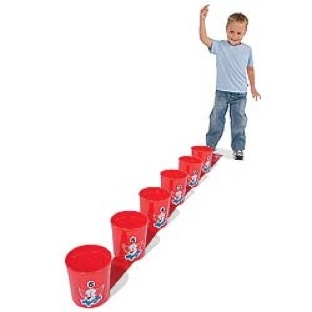
On a personal level, I’ve never livewelled a bass before. And I refrain from targeting smallmouth during the spawn or hosting bed fishing trips which we’ve termed as “bozo buckets”. The most bass fishing traffic of the year in my region occurs during the three weeks of spawning season. From Memorial Day weekend through mid June, anglers from far away locations travel to my region solely to target spawning fish. On these limited resource waters, this overexploitation can put fisheries at-risk. Come post-spawn, I am appalled at the number of sores, fin infections, and jaw punctures many of these beaten up, nesting fish have. Did they ever attempt spawning?
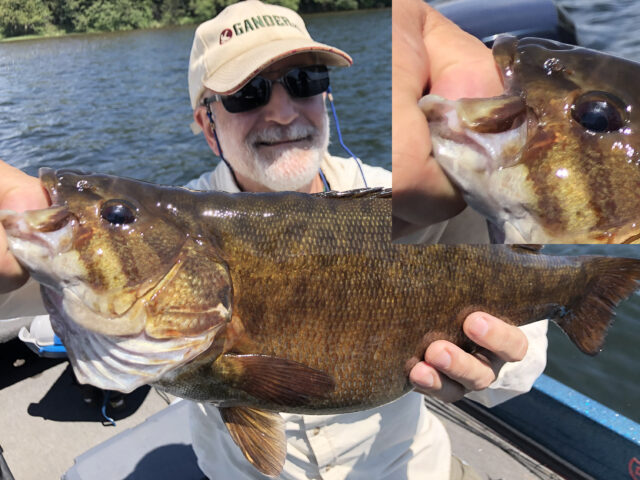
Signs of a pressured fishery are catching fish with several jaw punctures or deformity like this 20 inch specimen.
If you must, push for more live release events. Don’t use any nets whatsoever during the spawning season. Don’t overplay. Refrain from over-handling at any capacity. Strive to enjoy all of your fishing activity according to the best interests of the fishery.
Our fisheries and lakes are sacred. Our successful fisheries are entirely dependent on catch and release and successful spawning recruitment. However, the concept isn’t followed through when delayed mortality occurs, or when fish are mishandled and manhandled.
Take care of the fishery, and it’ll bless and take care of you in the same ways it has for my family and I.
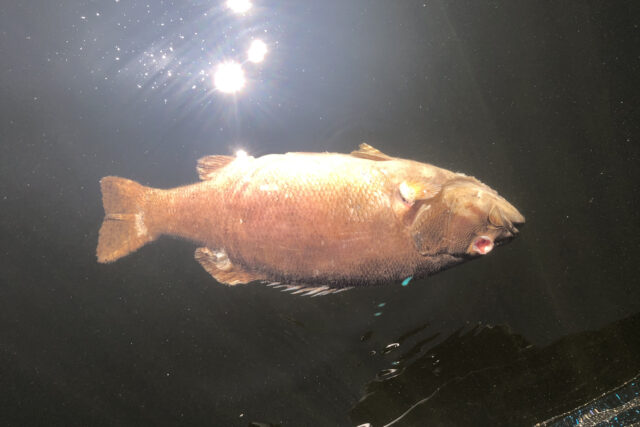
Many fisheries are being pressured to death, literally. This smallmouth was found during the 2020 spawning season.
#10 – History Can Repeat Itself
Have you ever fished memories? Or caught the same personal best fish multiple times? I have succeeded in both, and it works.
If targeting trophy fish, or patterning annual bites, history repeats itself. If you’re out to fish memories, history always has the potential of repeating itself too. I’ve accomplished it with catching my own personal best largemouth bass, smallmouth bass, walleye, and muskie. Each specimen except for my biggest muskies was caught not once, but twice, by either me or with a guide customer.
The biggest fish of every lake or river system homes on spots that are unique to that fish. They’ll also revisit them annually. This patterning prediction can be made with identifying conditions and triggering effects that’ll promote and engage their peak activity levels and feeding patterns. Understand how fish migrate and move. Then you’ll eventually find out where they live. Then pursue them only when conditions trigger them to be most approachable and catchable.
Some personal best fish I’ve captured have a unique story, and they’ve been a repeat catch.
My personal 23” largemouth bass caught in northern Wisconsin on August 31, 2019 was caught because I identified where it lived, and observed when it smashed schools of bluegills atop the surface during a moon overhead. First and only cast with a black and blue swim jig with grub tail trailer was all it took. Nothing else caught that day with my wife Amanda. Then on a guide trip almost 1 year later on August 1st, 2020, my customer caught the same exact fish from the same spot. During a mid-summer coldfront and cool-down, a prime window for any trophy fish pursuit. Eric and I now share the same personal best largemouth bass.
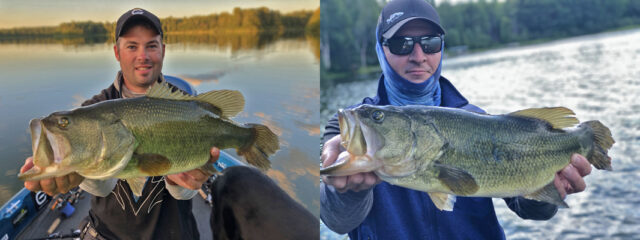
My personal best 22” smallmouth bass was caught the first time on August 31, 2017 during a bluebird afternoon. It was the only fish caught, weighing slightly under 7 lbs. I speculate it was the small isolated mid lake hump she called home, as well as another moon overhead that occurred at the time of strike. She was captured with a 4” cisco pattern swimbait. The same fish was recaptured again 9 months later, from the same spot and waypoint. This time captured with a cisco pattern suspending jerkbait. I knew this fish was triggered because it was during moonrise of the May 18th, 2018 full moon. Monster smallmouths tend to show up during this month’s full moon period to feed for the first time of spring, and seek nesting sites. She was heavier the second time at 7.5 lbs. due to her egg carrying weight.
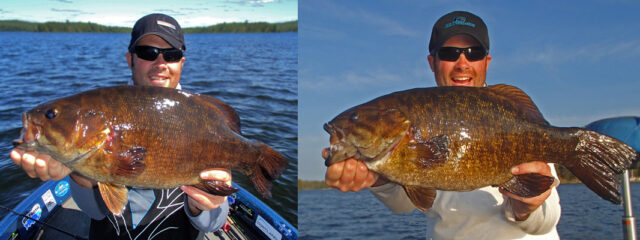
Walleyes? Both a friend and I have caught the same 28 inch walleye from the same hole at our favorite northern Illinois river. First in February 2017, and again in April 2018. She bit a silver chrome 5” Rebel Minnow both times.
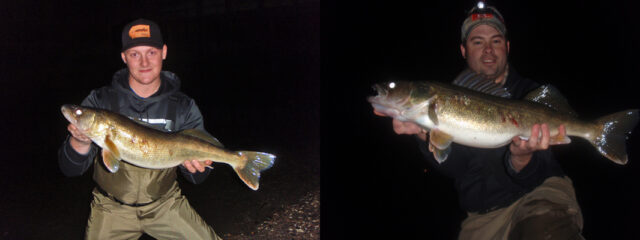
My muskie story gets even crazier. The only two 50 inch class northern Wisconsin mega fishes I’ve ever caught came on the same date, exactly 10 years apart. Both personal records but different specimens were produced from the same water, same wet and gloomy weather conditions, a 1:30 pm moon overhead period, on the historic September 29th date. My longest to date, a 51 incher, was captured with a dead sucker on September 29, 2010. Fast forward to ten years later on September 29, 2020, I sought out to fish memories on my day off from guiding and 10 year anniversary of that specific catch. Early that morning, I anticipated and predicted the high probability for another monumental catch that would be talk of the town. My conditions and scenario were identical to how I remembered that first historic catch. I left the landing on a battery that could barely crank. Two hours later, I caught my most massive and heaviest musky to date. A 49.75 incher weighing an estimated 35 to 40 lbs. Casting up onto a shallow sand and weed flat, she snuck up from under my fat bastard. It was the fastest 10 second tussle of my life before netted. She swam back home a few short minutes later. I lay on my boat floor for the next hour with nothing further to prove. When I decided to move on to the next spot, the boat battery was dead. I made it back to shore, eventually. September 29th is a historic date for my record book. I’ve decided to attempt the tri-fecta next on September 29, 2030.
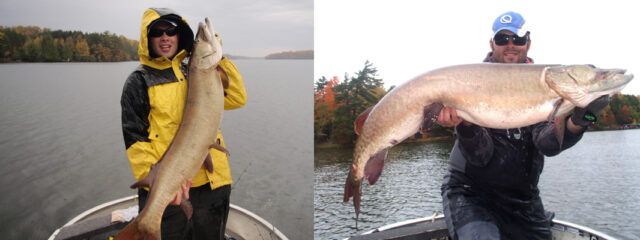
Feats and accomplishments like these, with history repeating itself, are what can set trophy hunters apart from the casual angler who isn’t as detail and calculation oriented. Furthermore, this proves how sensitive and in extremely limited supply our fisheries and their trophy specimens truly are. Catch and release is the only renewable resource and enabler of catching memories and history repeating.
Many of today’s anglers would be wise to examine similar values and identify their personal theories and observations so they may establish their own philosophies to use as a personal handbook to angling success. Consider these additional and newfound fundamental fishing values to help make you a more successful angler for 2021 and beyond.
Andrew Ragas splits time between the Chicago area and Wisconsin’s Northwoods. Based in Minocqua, WI, he specializes in trophy bass fishing and offers guided trips from May thru October. While big bass is the passion, he dabbles in multi-species as well. He may be visited online at www.northwoodsbass.com


